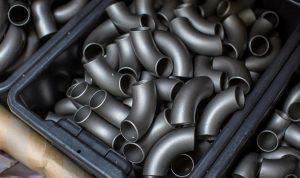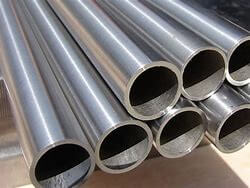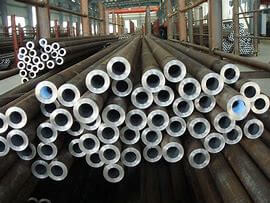DIN 2605 is a German standard that specifies the dimensions and tolerances for seamless and welded steel butt-welding fittings. This standard covers a wide range of fittings, including elbows, tees, reducers, stub ends, and caps, that are used for pipelines and pressure vessels in various industries.
Here are some key features of DIN 2605:
1. Material specification: DIN 2605 specifies the materials that can be used for the manufacture of butt-welding fittings, including carbon steel, stainless steel, and alloy steel.
2. Dimensions: The dimensions of butt-welding fittings in DIN 2605 are specified according to the nominal pipe size (NPS), the wall thickness, and the angle of the fitting. The standard covers fittings with angles of 45 degrees, 90 degrees, and 180 degrees.
3. Tolerances: The tolerances for butt-welding fittings in DIN 2605 are specified for both the outside diameter (OD) and the wall thickness (WT) of the fitting.
4. Manufacturing: DIN 2605 specifies the manufacturing processes that can be used for butt-welding fittings, including seamless and welded construction methods.
5. Testing: The standard specifies the testing requirements for butt-welding fittings, which include non-destructive testing (NDT) methods such as radiographic testing and ultrasonic testing.
6. Marking: Butt-welding fittings in accordance with DIN 2605 must be marked withthe manufacturer’s name or trademark, the material grade, the nominal size, the angle of the fitting, and the standard number (DIN 2605).
DIN 2605 is an important standard for the manufacture of butt-welding fittings in Germany and is widely used in Europe and other parts of the world.
It provides guidelines for the design, materials, manufacturing, and testing of butt-welding fittings to ensure safe and reliable operation in a variety of industries. It’s important to work with a qualified engineer or supplier to ensure that the appropriate standard is selected for a specific application and that the butt-welding fittings used meet the required standards and specifications.
DIN 2605 fittings are commonly used in a variety of industries for connecting pipes and tubes in a piping system. Some of the common applications of DIN 2605 fittings include:
1. Chemical processing: DIN 2605 fittings are commonly used in chemical processing plants for connecting pipes and tubes that transport chemicals and other hazardous materials.
2. Power generation: DIN 2605 fittings are used in power generation facilities, such as nuclear power plants and thermal power plants, for connecting pipes and tubes that transport steam and other fluids.
3. Oil and gas: DIN 2605 fittings are used in the oil and gas industry for connecting pipes and tubes used in exploration, production, and transportation of oil and gas.
4. Water treatment: DIN 2605 fittings are used in water treatment plants for connecting pipes and tubes that transport water and other liquids used in the treatment process.
5. Food and beverage: DIN 2605 fittings are used in the food and beverage industry for connecting pipes and tubes that transport liquids used in the production process.
6. Pharmaceutical: DIN 2605 fittings are used in the pharmaceutical industry for connecting pipes and tubes used in the production of drugs and other medical products.
DIN 2605 fittings are suitable for a wide range of applications and are used in many different industries. The specific application of DIN 2605 fittings will depend on the requirements of the application, such as the type of fluid being transported, the temperature and pressure requirements, and the location of theinstallation. It’s important to work with a qualified engineer or supplier to select the appropriate fittings and ensure that they meet the required specifications and standards for a specific application.





